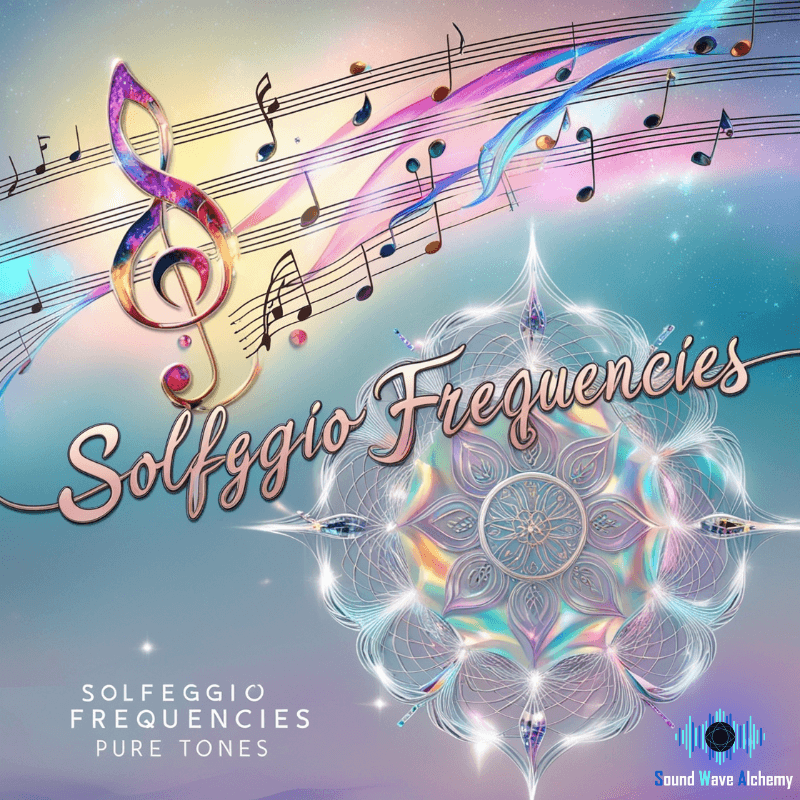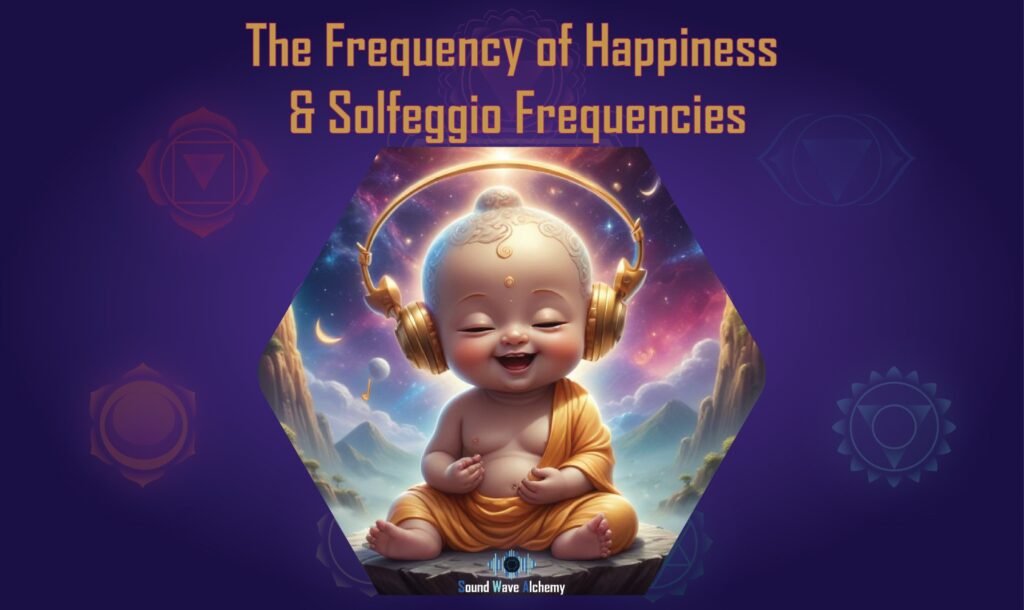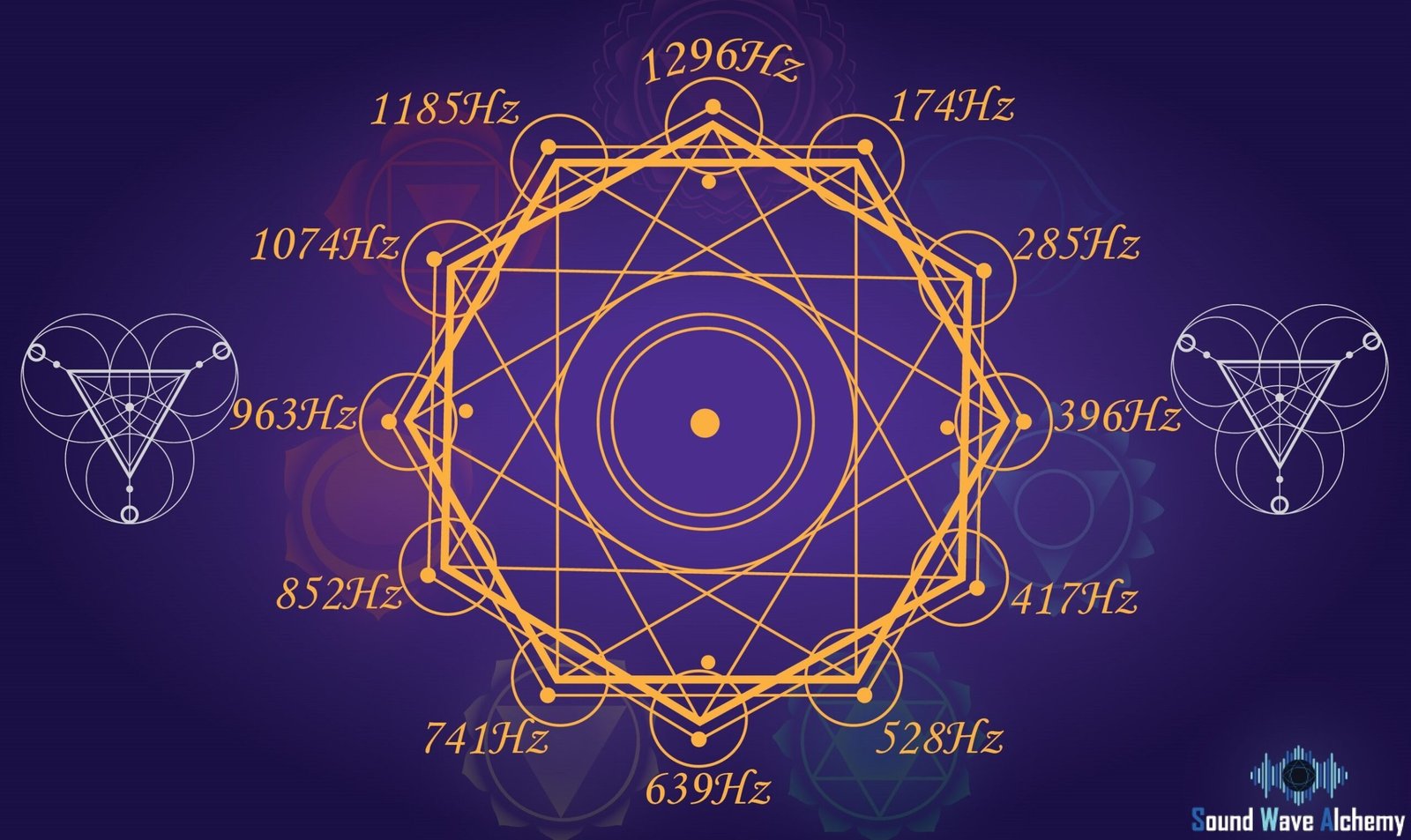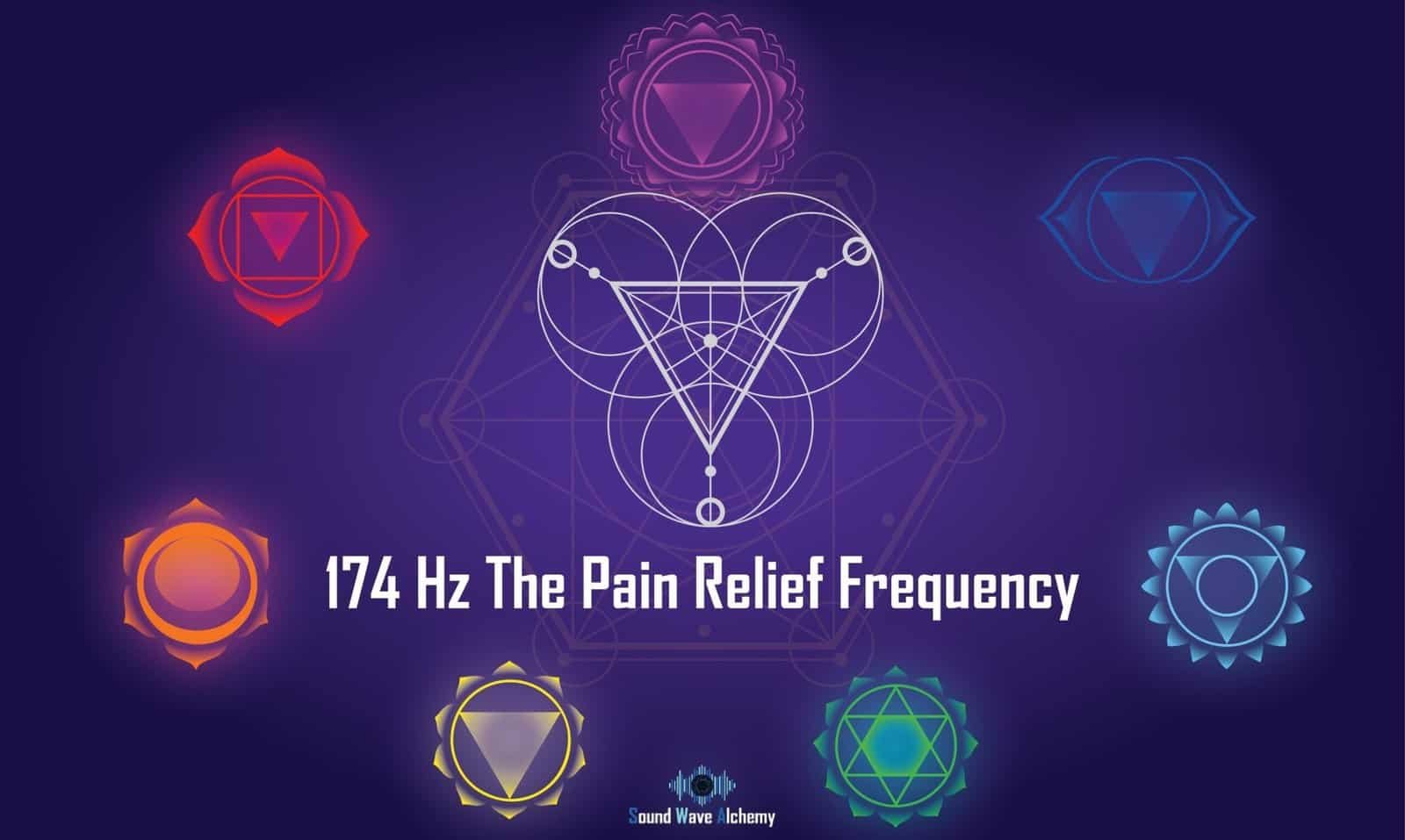We often hear about the concept of vibrational frequency in the context of spiritual and healing practices. It’s believed that everything in the universe vibrates at a certain frequency, including our thoughts and emotions. When we experience positive emotions like joy and happiness, our vibrational frequency is said to increase, whereas negative emotions like fear and anger lower it.
So, what is the vibrational frequency of happiness? While there is no one definitive answer, many believe that the frequency of happiness falls within the range of 528 Hz to 639 Hz. These frequencies are part of the Solfeggio scale, a set of ancient musical tones used for healing and spiritual purposes. Each frequency is believed to correspond to a specific energy center in the body, known as chakras.

Among the Solfeggio frequencies, there are a few that are commonly associated with happiness. The 528 Hz frequency, also known as the Love frequency, is said to stimulate feelings of love, joy, and inner peace. Meanwhile, the 639 Hz frequency is believed to enhance communication, relationships, and harmony. While the scientific evidence for the effectiveness of Solfeggio frequencies is limited, many people report feeling more relaxed and balanced after listening to them.
- Understanding Vibrational Frequency
- The Concept of Happiness in Vibrational Terms
- Solfeggio Frequencies and Happiness
- Frequently Asked Questions
- What are the benefits of listening to 528 Hz frequency?
- How does the 963 Hz solfeggio frequency affect emotional well-being?
- Can 147 Hz sound waves influence happiness levels?
- What relationship exists between solfeggio frequencies and emotional states?
- How is 258 Hz beneficial to mental health?
- Which solfeggio frequency is associated with joy and positivity?
Understanding Vibrational Frequency

Concept of Vibrational Frequency
Everything in the universe is made up of energy, including our thoughts and emotions. This energy vibrates at a certain frequency, which is measured in hertz (Hz). The concept of vibrational frequency is based on the idea that everything in the universe vibrates at a specific frequency. This includes physical objects, such as a table or a chair, as well as non-physical things, such as thoughts and emotions.
The Law of Attraction states that we attract things into our lives that vibrate at the same frequency as our thoughts and emotions. This means that if we have positive thoughts and emotions, we will attract positive experiences and people into our lives. On the other hand, if we have negative thoughts and emotions, we will attract negative experiences and people.
Vibrational Frequency and Emotions
Each emotion has its own vibrational frequency. For example, love, joy, and gratitude have high vibrational frequencies, while fear, anger, and sadness have low vibrational frequencies. When we experience emotions, we emit a certain frequency that attracts similar frequencies. This is why it’s important to focus on positive emotions and thoughts in order to attract positive experiences into our lives.
Solfeggio frequencies are a set of tones that are said to have healing properties and can help raise our vibrational frequency. Each tone is associated with a specific frequency and can be used to balance different aspects of our lives, including our emotions.
⭐️⭐️⭐️⭐️⭐️ (4.3/5)
Perfect support for your meditation and relaxation moments.
Just $189.99
🪑 Relax & Buy NowWhat is the Vibrational Frequency of Happiness?
The frequency of happiness is said to be 639 Hz, which is associated with the solfeggio tone of FA. This tone is said to help strengthen relationships, family, and community unity, which can lead to increased happiness and well-being.
In summary, understanding vibrational frequency is important because it can help us attract positive experiences into our lives. By focusing on positive emotions and thoughts, we can raise our vibrational frequency and attract more happiness and abundance. Solfeggio frequencies can also be used as a tool to help balance our emotions and raise our vibrational frequency.
The Concept of Happiness in Vibrational Terms

Defining Happiness Frequency
In vibrational terms, happiness is defined as a high-frequency energy that resonates with positive emotions. Everything in the universe exists on energy, and vibrations or frequencies can be measured. The natural rhythms of the earth, such as the changing of seasons and ocean waves, produce vibrations that can be measured. Similarly, emotions produce vibrations that can be measured on a frequency scale.
The emotional vibration scale is based on whether an emotion cultivates a primarily positive or negative mindset. Joy, love, passion, and happiness are some of the highest-frequency emotions, while fear, anger, grief, guilt, and jealousy are common low-frequency emotions.
Measuring Happiness
Measuring the vibrational frequency of happiness is not an exact science, but there are several tools that can be used to help raise our vibrational frequency. One such tool is the use of Solfeggio frequencies. These ancient frequencies are a set of six tones that were used in ancient Gregorian chants for healing purposes. Each tone is associated with a specific frequency and has a unique healing property.
Of the six Solfeggio frequencies, the 528 Hz frequency is often referred to as the “love frequency” and is believed to have the power to bring about transformation and miracles. It is also believed to be the frequency of DNA repair and can help to restore balance and harmony to the body. While there is no specific Solfeggio frequency that is associated with happiness, the use of these frequencies can help to raise our vibrational frequency and promote a positive mindset.
In conclusion, understanding the concept of happiness in vibrational terms can help us to better understand the power of positive emotions and how they can impact our overall well-being. By measuring our vibrational frequency and using tools such as Solfeggio frequencies, we can work to raise our frequency and cultivate a more positive mindset.
Solfeggio Frequencies and Happiness

Overview of Solfeggio Frequencies
Solfeggio frequencies are a set of ancient musical tones that are believed to have healing properties. These frequencies were used in Gregorian chants and were believed to have spiritual and physical benefits. There are six main Solfeggio frequencies, each with a specific tone, frequency, and intention associated with them. These frequencies are believed to resonate with specific energy centers in the body, also known as chakras. By listening to these frequencies, it is believed that one can balance their energy centers and promote healing.
Specific Solfeggio Frequencies for Happiness
Of the six main Solfeggio frequencies, there are two frequencies that are believed to promote happiness. These frequencies are:
- 528 Hz (Mi): This frequency is known as the “Love frequency” and is believed to promote love, peace, and happiness. It is also believed to have the ability to repair DNA.
- 639 Hz (Fa): This frequency is known as the “Relationship frequency” and is believed to promote harmony in relationships, including family, friends, and romantic partners. It is also believed to promote happiness and well-being.
While there is no scientific evidence to support the claims of Solfeggio frequencies, many people believe in their ability to promote healing and well-being. Listening to these frequencies may help to promote relaxation, reduce stress and anxiety, and increase feelings of happiness and well-being.

Harmonize and align your chakras with the healing tones of the Solfeggio scale.
Ideal for deep meditations and vibrational realignment.
$249.99 $96.69

A pure, powerful collection of Solfeggio frequencies to support healing, energy work, and spiritual balance.
Great for therapists and sound healers.
$249.49 $72.96
In conclusion, Solfeggio frequencies are believed to have healing properties and can be used to promote happiness and well-being. While there is no scientific evidence to support these claims, many people believe in their ability to promote healing and balance energy centers in the body.
🧘♂️ Handpicked Gear for Calm, Clarity & Sleep
Frequently Asked Questions
What are the benefits of listening to 528 Hz frequency?
Listening to the 528 Hz frequency is believed to have several benefits, including promoting feelings of love, peace, and positivity. This frequency is also thought to have the ability to repair DNA, enhance creativity, and increase energy levels. While scientific evidence is limited, many people report experiencing a sense of calm and well-being after listening to this frequency.
How does the 963 Hz solfeggio frequency affect emotional well-being?
The 963 Hz frequency is often associated with activating the pineal gland, which is believed to have a role in emotional regulation. Listening to this frequency is thought to promote feelings of inner peace, spiritual awakening, and connection to the universe. While more research is needed to fully understand the effects of this frequency on emotional well-being, many people report experiencing a sense of clarity and heightened awareness after listening to it.
Can 147 Hz sound waves influence happiness levels?
While there is limited scientific evidence to support the use of 147 Hz sound waves for influencing happiness levels, some people believe that this frequency can promote feelings of joy and positivity. This frequency is also associated with promoting a sense of safety and security, which can contribute to overall well-being.
What relationship exists between solfeggio frequencies and emotional states?
Solfeggio frequencies are believed to have a direct impact on emotional states, with each frequency associated with specific emotional and spiritual properties. For example, the 396 Hz frequency is often associated with releasing feelings of guilt and fear, while the 639 Hz frequency is linked to promoting feelings of love and connection. While more research is needed to fully understand the relationship between solfeggio frequencies and emotional states, many people report experiencing positive emotional effects after listening to them.
How is 258 Hz beneficial to mental health?
The 258 Hz frequency is often associated with promoting feelings of inner peace, calm, and balance. Listening to this frequency is thought to have a grounding effect, helping to reduce feelings of anxiety and stress. While more research is needed to fully understand the effects of this frequency on mental health, many people report experiencing a sense of relaxation and improved mood after listening to it.
Which solfeggio frequency is associated with joy and positivity?
The 528 Hz frequency is often associated with promoting feelings of joy and positivity. This frequency is believed to have a direct impact on the heart chakra, which is associated with love, compassion, and emotional balance. Listening to this frequency is thought to promote a sense of well-being and connection to others, while also enhancing creativity and energy levels.









